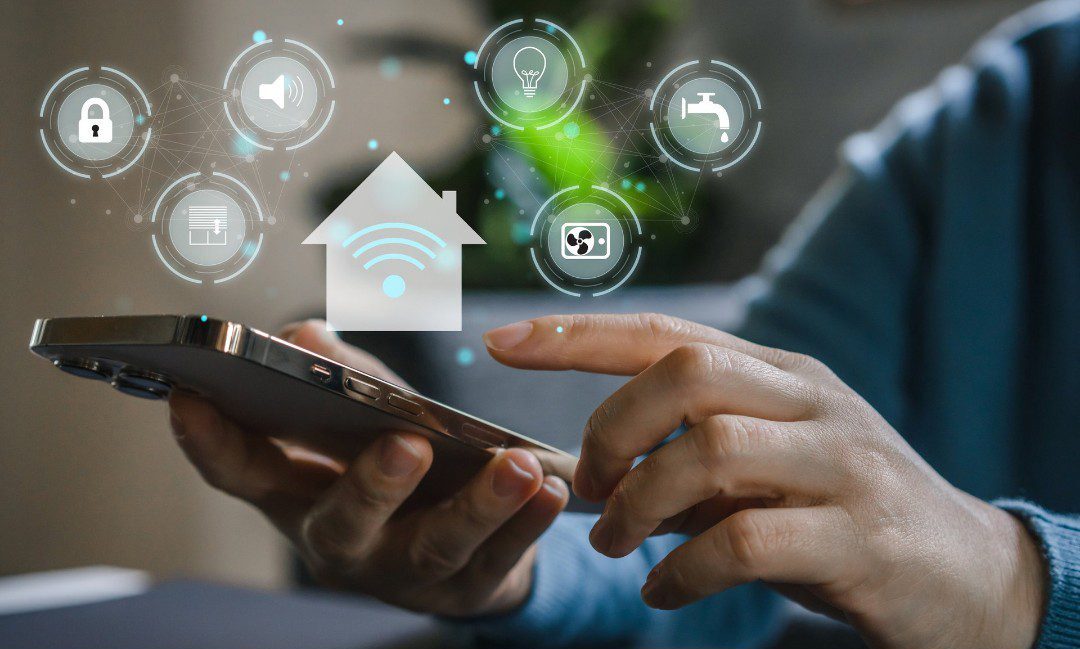The Internet of Things in homes is rapidly transforming the way we live, making it crucial for homeowners and businesses to understand its potential. By integrating interconnected devices, homes are becoming smarter, more efficient, and better equipped to handle everyday tasks. As the digital age continues to evolve, the appeal of the Internet of Things (IoT) is undeniable, promising increased convenience and efficiency in our living spaces.

What is the Internet of Things in Homes?
The Internet of Things in homes refers to the network of physical devices that connect to the internet and communicate with each other. These devices can include anything from smart thermostats and security systems to refrigerators and lighting systems. The primary goal is to create a seamless, interconnected environment that enhances the quality of life for residents. IoT technology allows these devices to collect and exchange data, enabling homeowners to monitor and control their home environments remotely.
How IoT is Transforming Home Living
1. Enhanced Security and Safety
One of the most significant benefits of IoT in homes is improved security. Smart security systems, including surveillance cameras, motion detectors, and smart locks, offer homeowners peace of mind by providing real-time alerts and remote access. With IoT, you can monitor your home from anywhere, ensuring the safety of your loved ones and belongings.
Moreover, IoT-enabled smoke detectors and carbon monoxide alarms enhance safety by sending instant alerts to your smartphone, allowing for timely responses to potential hazards. For a comprehensive understanding of smart home security, you can explore this smart home security guide.
2. Energy Efficiency and Cost Savings
IoT devices contribute to energy efficiency by allowing homeowners to monitor and manage energy consumption effectively. Smart thermostats, for example, learn your schedule and adjust the temperature accordingly, reducing energy waste. Similarly, smart lighting systems can be programmed to turn off when a room is unoccupied, further reducing electricity bills.
By adopting smart home automation, homeowners can significantly lower their energy usage and save on utility costs, making IoT a valuable investment for the future.
3. Convenience and Comfort
The convenience offered by IoT is unparalleled. Imagine controlling your home's lighting, temperature, and appliances with just your voice or through a smartphone app. IoT makes this possible, allowing you to create personalized experiences that cater to your preferences. Smart speakers like Amazon Echo and Google Home integrate with other IoT devices, enabling seamless control over various aspects of your home.
For those interested in integrating AI assistants into their smart homes, check out this integration guide.
Challenges and Considerations
1. Privacy and Security Concerns
While IoT offers numerous benefits, it also raises concerns about privacy and data security. With devices constantly collecting data, homeowners must ensure that their networks are secure to prevent unauthorized access. Using strong passwords, enabling two-factor authentication, and keeping devices updated are essential steps to protect your IoT ecosystem.
For more insights on securing your smart home, refer to this detailed smart home setup guide.
2. Compatibility and Interoperability
Another challenge is ensuring that all IoT devices within a home are compatible and can communicate seamlessly. Homeowners often face difficulties when integrating devices from different manufacturers. To overcome this, it is advisable to choose devices that adhere to common standards and protocols, ensuring smooth interoperability.
The Future of IoT in Homes
As technology continues to advance, the potential for IoT in homes is limitless. Future developments may include more advanced AI-driven systems that anticipate our needs and automate tasks without human intervention. The integration of IoT with other emerging technologies, such as blockchain and edge computing, could further enhance security and efficiency.
For inspiration on how to design your smart home, you can explore smart home design ideas.
Conclusion
The Internet of Things in homes is revolutionizing the way we live, offering unprecedented convenience, security, and efficiency. As homeowners and businesses embrace this technology, it is essential to stay informed about the latest developments and best practices. By doing so, we can fully leverage the potential of IoT to create smarter, safer, and more comfortable living environments.

FAQs
What is the Internet of Things in homes?
The Internet of Things in homes refers to the network of interconnected devices that communicate with each other to enhance convenience, security, and efficiency in living spaces.
How can IoT improve home security?
IoT improves home security by enabling real-time monitoring and remote access through smart security systems, including cameras, motion detectors, and smart locks.
What are the challenges of implementing IoT in homes?
Challenges include privacy and security concerns, as well as ensuring compatibility and interoperability among devices from different manufacturers.

